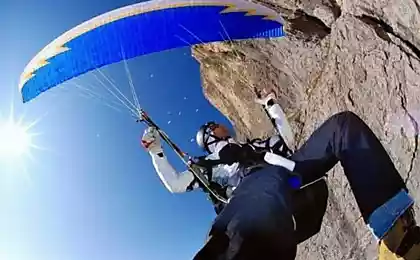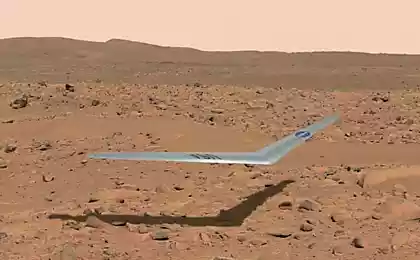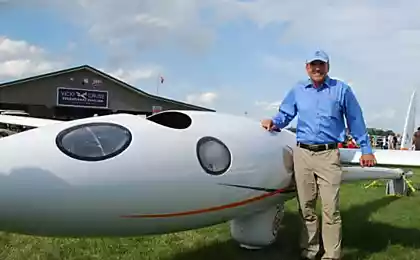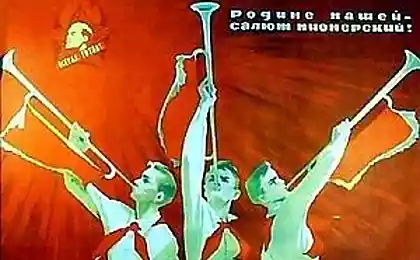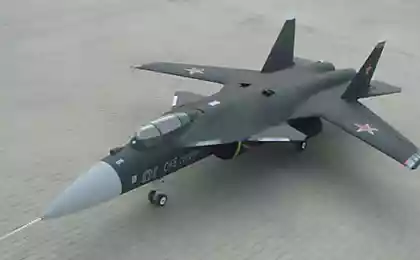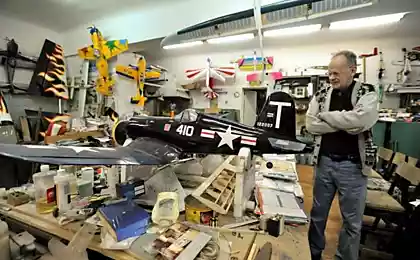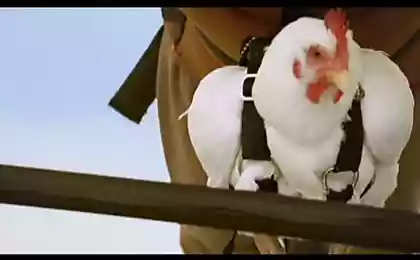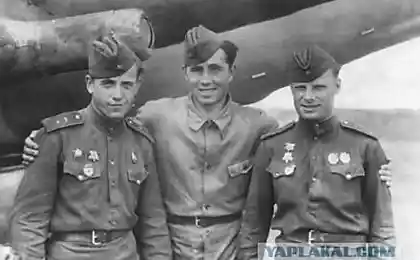329
How to start flying by yourself + video instructions
The principle of soaring flight is based on the existence of ascending air currents. Like the wind, just straight up. The task of the pilot is to find such a stream of air and stay in it for a while to gain altitude, and then fly to the next stream. And so in the cycle.
The main advantage of steamers is flight without the use of fuel. You only need starting energy to reach the initial height. However, this imposes limitations. To take off, you need to take the initial energy somewhere. You can take off either from a mountain, or with the help of a winch, or behind another, motor, aircraft.
One of the main characteristics of any aircraft is quality. And for steamers, this is the most important characteristic. This value determines how many kilometers you can fly down by 1 km. This is usually between 3 and 60. That is, being at an altitude of 1000 meters, you can fly up to 60 km in a straight line. (in absolutely ideal conditions and at a certain speed)
Stereotypes about soaring flights It's dangerous to fly.
It is dangerous to cross the road in the wrong place because you can get hit by a car. In the air, everything depends on you.
In the air you can encounter another aircraft or bird.
This possibility exists, but its probability is so tiny that the cases of such collisions can be counted on the fingers. One of the most famous is alive, whole, eagle. The probability of a collision with another aircraft depends on the number of these vehicles around you.
Very difficult to take off and land.
Yes, it’s the hardest part of flying, but it’s no harder than driving an unregulated intersection. However, it all depends on the aircraft you choose. For paragliders and hang gliders, this is much more difficult than for a glider.
It takes a long time to learn to fly on your own.
You need to study, but not more than in a car course. Even less because there are no traffic signs in the air. But to fly away from the place of takeoff somewhere, you already need to learn much more.
There are no flights without wind.
The wind has little to do with the ability to fly. Flight occurs due to vertical air currents.
Without a motor, you cannot fly long and far.
On the plain in normal weather you can fly all daylight. In the mountains you can fly forever because there are streams around the mountains. In my first summer year, in Kiev, on a glider, I flew 6 hours a day without a break. It could have been longer, but there was no strength.
If something breaks in the air and there is no chance of escape.
The design is so simple that there is almost nothing to break in it, under normal loads. Electrical systems are auxiliary and their failure is not critical to flight. No device is essential. You can take off and land without any equipment. There is always a parachute for emergency situations.
It's really extreme.
It depends on what you mean by extreme. All aviation is based on flight safety and minimization of extreme weather. If you learned to take off and immediately flew along the route, then this is not extreme, but stupidity. Listen to experienced pilots, read the description of other pilots’ accidents and do not violate the laws of aerodynamics, and you will fly safely.
It's very expensive.
In reality, it costs from 50.e./month. You don’t always have to buy your own aircraft. Renting is often better.
paraplane
The facts
- Flight speed from 20 to 70 km / h.
- The construction is only made of fabric. His ancestor was a parachute.
- The weight of the pilot is 40 to 130 kg.
- The weight of the paraglider with equipment is about 15 kg.
- World record for distance (wind) 502 km.
- The record for the triangular route with the return to the launch site is 118 km.
- Feel free to fly when the wind is right in your face.
- Very compact. It fits in a large backpack with which even in public transport you can pass.
- There is no red tape with documents and medical reports.
- Very spectacular and impressionable.
- You can fly without assistance. He took off. I landed somewhere, packed everything in a backpack and took a minibus home.
- It's hard to break. You can break it.
- Landing outside the airfield is not a problem. You can sit anywhere.
- Take off/land off your feet. Risk of injury.
- Wing without pipes. This means that, theoretically, it could collapse in the air. However, it is possible to reveal it =
- Very slow flight speed. Flying against the wind is virtually impossible (except in the mountains).
- Take off only from the mountain or by towing. It is impossible to fly from the plain on your own.
- No cabin. The higher you fly, the colder it is.
- Ride in tandem. It costs about $50.
- Training takes place on a small slide on club equipment from $ 50 per month.
- You can buy used for 500-1000 dollars.
- A sports paraglider costs about $2,500.
Deltaplan
The facts
- Flight speed from 30 to 120 km / h.
- Triangular shape, made of metal pipes and fabric.
- The length of the folded from 2 meters (usually folded into a 6-meter package). Weight from 25kg.
- The weight of the pilot is 40 to 130 kg.
- World record for distance (wind) 700 km.
- The record for the triangular route with the return to the start site is 357 km.
- Feel free to fly when the wind is right in your face.
- Easy to transport by car.
- Easy to repair.
- There is no red tape with documents and medical reports.
- Flying against the wind is possible, but difficult.
- Landing outside the airfield is not a problem. You can sit anywhere.
- You can fly without the club. He took off. But someone has to pick you up by car if you land outside the airfield.
- Sports hang gliders twist some aerobatics figures.
- Spectacular.
- Take off/land off your feet. High risk of injury.
- You need either a mountain or a tow truck to take off. It is impossible to fly from the plain on your own.
- A heavy load on the shoulders and back. Don't believe Leontiev's song "And how easy it is for my shoulders." He clearly never carried a hang glider on himself.
- Training takes place almost independently only listening to the advice of the instructor. Tandem (two) flights exist, but are quite difficult to learn.
- Due to the specific location of the pilot, you constantly have to strain the neck.
- Transportation by car only. Public transportation is possible, but very difficult.
- In the early years, the raid is very small.
- Easy to break. Most problems can be solved by yourself, but some parts have to be ordered from the manufacturer.
- No cabin. The higher you fly, the colder it is.
- You can ride in tandem once. About $80.
- Training takes place on club equipment. For CIS, about $50/month.
- Your own used hang glider can be bought for $ 500-1000.
- A sports hang glider costs about $4,000.
glider
The facts
- Metal or plastic construction. The use of fabric is minimal.
- The oldest of the aircraft. Any aircraft is nothing more than a glider with an engine.
- Flight speed from 50 to 300 km / h.
- The weight of the pilot is from 50 to 130 kg.
- The world record for range is 2256.9 km 3009 km.
- The record for the triangular route with the return to the start site is 1756 km.
- Large aircraft can also be a glider. Like one and two.
- Safe. The man is in a closed cabin. Takeoff and landing takes place on the chassis.
- There are no age and health restrictions in this sport.
- Available for training. There are many two-seat gliders on which the training is carried out. Control is completely duplicated for both pilots.
- A large number of clubs in the CIS, which exist thanks to equipment and personnel from the USSR.
- On the gliders twist almost all the figures of aerobatics.
- Takeoff and landing only from an airfield or a flat field. Takeoff from the mountain is not practiced.
- Flying far and fast. Wind is not particularly affected by the ability of the airframe.
- Flight comfort. Sitting in a glider is more comfortable than in a chair.
- All over the world, except for the CIS, it is an elite and expensive sport.
- Landing outside the airfield requires a well-chosen field. Difficulty with the evacuation of the airframe, in case of landing outside the airfield.
- You can fly without the support of the club only on a glider with an engine.
- Spectacularly nothing more than a game of chess. If you understand what is happening, you can admire it. There are exceptions.
- A lot of work or money to invest in the club (airfield, club equipment)
- In the CIS, gliding is not put on commercial tracks, so it exists at the expense of enthusiasts and equipment from the USSR. Accordingly, the concept of “client” for those who want to learn to fly is only being formed.
- In order to fly independently, you need to either get the “rights” for a glider or fly in a club on club equipment and keep a lot of documentation related to this.
- There's a medical board.
- The more expensive the airframe, the more difficult and expensive its repair.
- You can ride for $80-$100. Flighting has recently been banned on training gliders, but the past 30 years have been spinning.
- In the CIS, training costs about $ 200 / month + work to service the club. The more experienced the pilot, the cheaper.
There is a concept of VIP training. For $ 500 / month, you can fly to the maximum and not be distracted. - You can buy a used training, double glider for 4000 $-8000 $.
- Sports used airframe without a motor costs from $ 10,000.
- A glider with an engine costs between $30,000 and $400,000.
Findings
All aircraft are completely dependent on the weather. Going from Punk A to B is hard. There is always a risk of landing somewhere in the middle. This is a hobby that allows you to feel the taste of free flight and look at the ground from a height. Soaring flights can not get bored - it is always a non-standard task. If you want to fly safely, high and comfortably, choose a glider. Want extreme and wind in the face - hang glider or paraglider. In any case, you can try anything.
Safe flight is about following the rules that are written in the books on flight management and taking responsibility for your actions. If you learn to fly without reading books, without studying the principles of aerodynamics and meteorology, then you will fly at random. And someday you won't be lucky. You can fly safely on any aircraft, if you follow the instructions for flight organization and pre-flight preparation. On a paraglider, it is easiest to violate these rules because there is an illusory simplicity of control and the principles of flight organization are most often violated. On gliders, you will not be allowed to start flying on your own until you have a guaranteed minimum of knowledge, which will be supported by control flights with an instructor.
Paragliding and hang gliding, It's like a weekend hobby -- it's pretty safe and budget-friendly for the middle class. However, injuries occur during the training phase. As a sport, these are extreme sports. This is very dangerous, and only for those who are ready.
Gliding is not an extreme sport. Injury is football while waiting for the weather. Flight accidents are, have been, and will be as not calculated situations in flight. But this is commensurate with the probability of a car accident.
But a daily 12-hour sitting at the computer is guaranteed to lead to irreversible injuries to the cardiovascular system. They are not visible until the time, and then, as a rule, “late to drink Borjomi”.
Source: /users/1108

